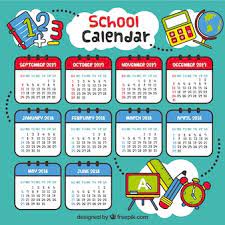What do you do when the number of students wanting to attend schools in your district vastly exceeds the number of spaces you have? How do you handle the growing number of educators who are leaving the profession; exhausted, discouraged and still years away from retirement? How do students who are fed breakfast and lunch at school everyday get through the two long months of summer break? Is there a way to prevent the learning loss that occurs over July and August?

These are important questions that districts, schools and teachers are grappling with. And some seem to be finding the answers in year-round schooling and/or 4 day work weeks. So I thought I’d take a look!
Let’s start with year-round school. Many countries already do this, including Australia and Korea. Australia, for instance, has two week breaks between most of their terms, with a longer, month-long break at Christmas.
There are a number of advantages to year-round school. There would likely be less learning loss, as students would be out of school for less time. For teachers, there would be less re-teaching of skills and knowledge that could potentially be forgotten during a long break. Large school districts could accommodate more students by using a staggered track system.
There are, of course, difficulties with year-round school. There would be increased costs in running facilities year round. Long established structures like summer camps would need to adapt and high school students would have fewer opportunities to get summer jobs or internships. Long, extended vacations would not be possible and families with children in different schools might be faced with quite different schedules.
My casual conversations with people over the topic of year-round school brought fairly strong opinions on both sides! Research on the academic benefits of year-round schooling is inconclusive, although some studies suggest that there are benefits, especially to low income students.
While year-round schooling might seem like something that happens overseas, 4 day work weeks are already a reality in a growing number of school districts. Generally, the way this works is that students attend four days a week, with each school day being longer in time. On the fifth day, teachers attend school and have time to work on planning, lessons and assessments and collaboration with colleagues. Staff meetings and professional development would also occur on the fifth day. The thinking is that this schedule would help cut teacher stress and attract more teachers to the job; perhaps even reverse the trend of job desertion that has been ravaging school districts.
Teachers would not be the only beneficiaries of a 4 day week. On the 5th day, students would be able to go to practice or lessons, work, study or pursue a personal interest. In addition, a longer weekend would likely result in fewer absences, as students would be more well-rested. This could potentially lead to better student performance as well.
Arguments against the 4 day week would include the fact that days would be longer, students who might rely on food from school could go hungry and the extra day off might cause childcare issues for families with younger children.
According to an article in Newsweek from earlier this year, over 2100 school in 900 districts in the US have gone to a 4 day week. In Canada, varied districts across the country have tried the 4 day week, with varied success.
Changes to the status quo are never easy but with all of the pressures facing the education system today, it makes sense to examine all possible solutions. Including ones like changes to the schedule!






